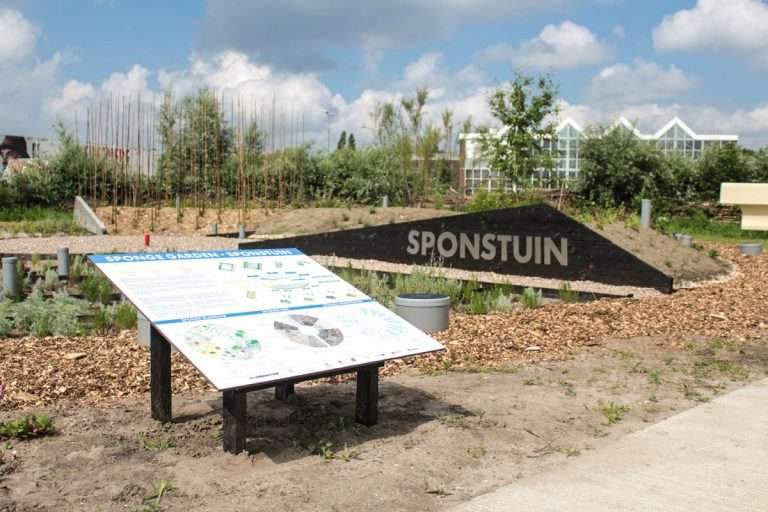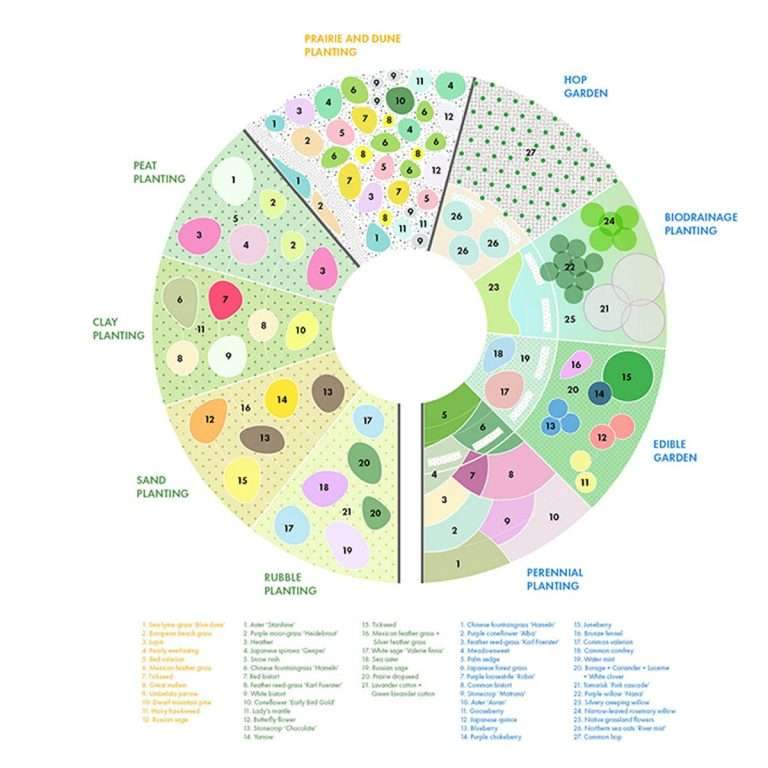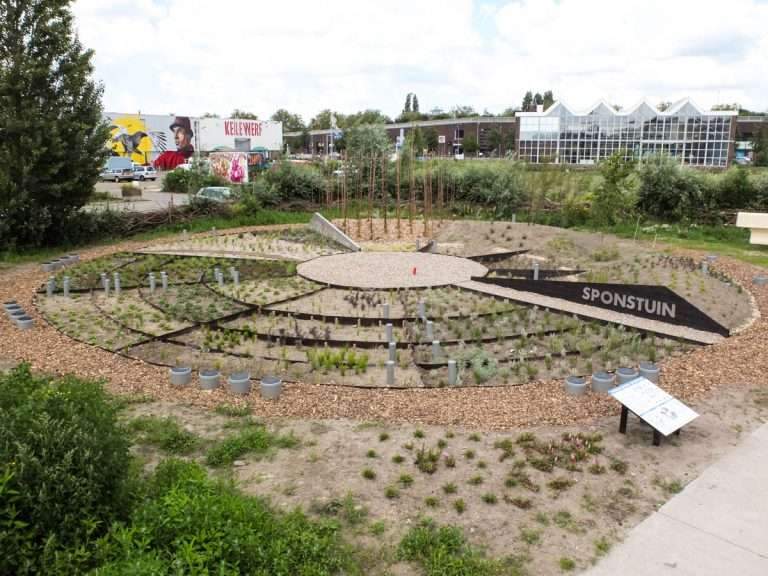In periods of climate change sometimes the abundance of rain increases,
and in other period’s drought periods last for a longer period, so how can these two extremes be mitigated?
The rain water currently flows through the sewers and increases the problem of drought,
in the future; there will be a need for larger sewers.
The mechanism of how a sponge works follows a three-way chain of collecting water,
storing it for a certain period, and then returning the water to the ecosystem.
This “collect – store – return” sequence indicates that the concept of a sponge is, in essence, a system.
At Sponge Garden, this site is a test of simple and practical “natural” solutions to maximize the city’s water resources,
during heavy rains and periods of severe drought while creating a context to enhance biodiversity. In the garden, three methods test:

Soil compartments
Water retention has improve in four distinct areas of Rotterdam,
low maintenance farming and efficient soil improvements for small areas such as private gardens
to encourage owners to contribute to climate measures and to increase the overall area of green spaces.

Waving the valley
Capillary infiltration illustrates how public spaces can be used to collect rainwater from local watersheds 4-5 times their size and slowly return the water.
These spaces can be effective for immediate buffering of heavy precipitation.
Thereafter, they retain water for longer periods so that it can use in prolonged dry spells,
and divide into four sub-concepts to offer diverse public use and aesthetics in urban contexts.
Depave Park
Super intrusion Instant and simple ways to expand planted areas and reduce paved area It is the least important intervention in removing solid infrastructure tested for its ability to function as a planter or even as a small garden.
The design of the sponge garden follows that of the food garden (Voedseltuin) where the planting is organized in circles.

The design has meeting space in the middle of the sponge garden, and the outside donut divide into three parts, each dedicated to a different experience.
The park is a pleasant group space, well enjoyed by nearby offices, food garden workers, visitors and locals. Educational and professional visits take place regularly.
Heavy rain simulated, observation is underway, as Sponge Garden shows that designing thriving public spaces can go hand in hand with research on new concepts for rainwater harvesting, holding and returning it to the natural environment.
It is an experimental garden where planting and maintenance modified over time, and heavy rainfall simulate.
For more architectural news


 العربية
العربية
Pingback: His Highness the Crown Prince announces the designs of The Line the city of the future in NEOM - ArchUp